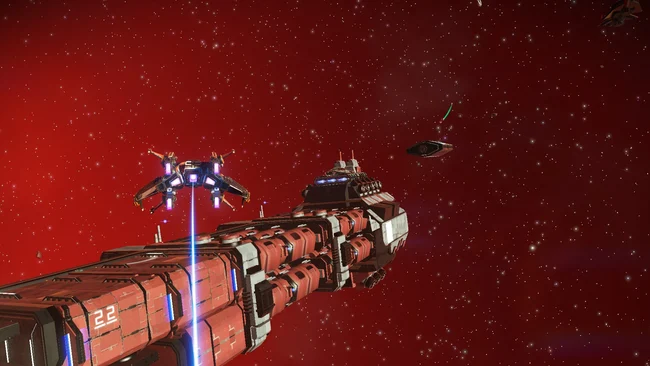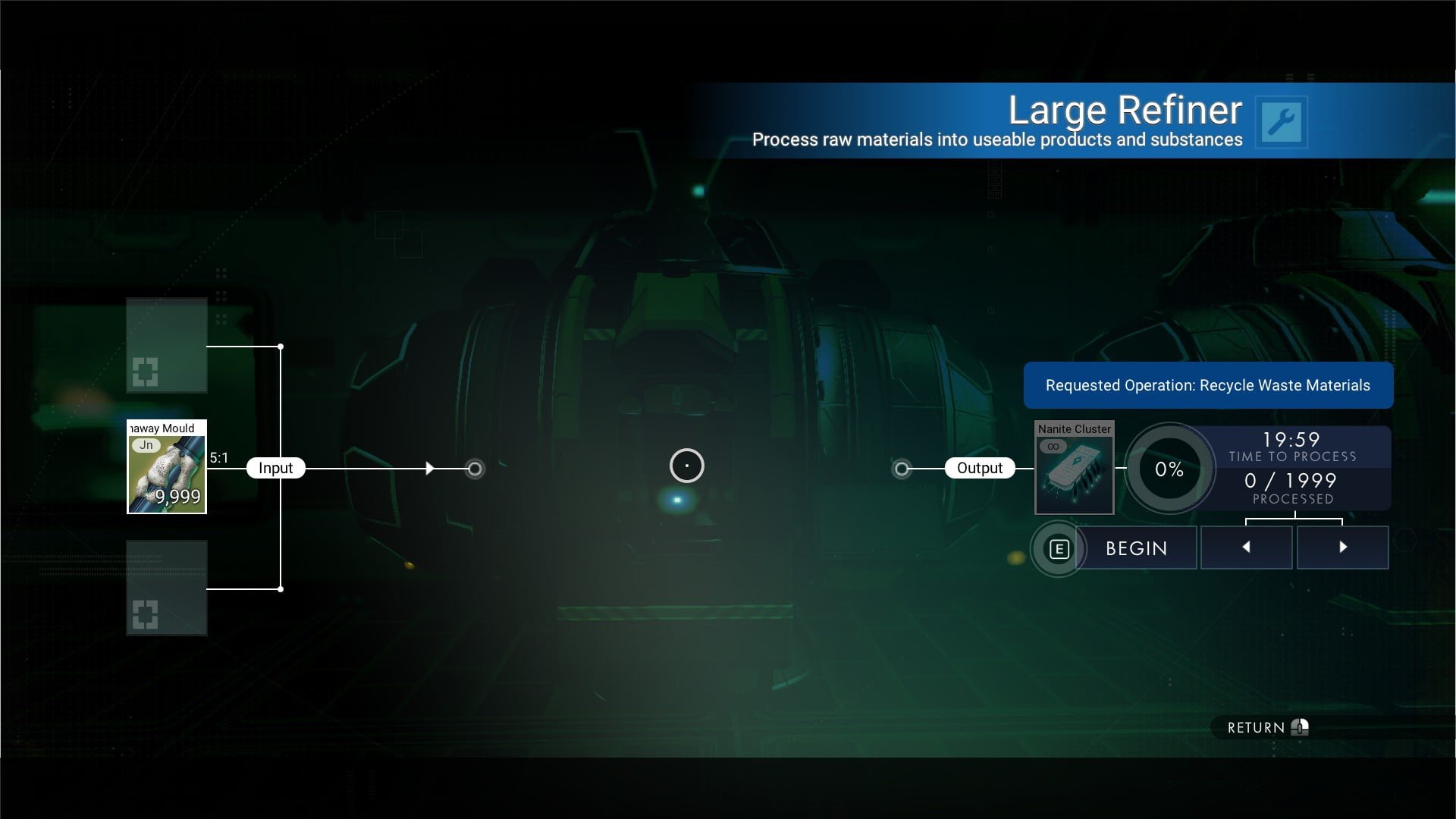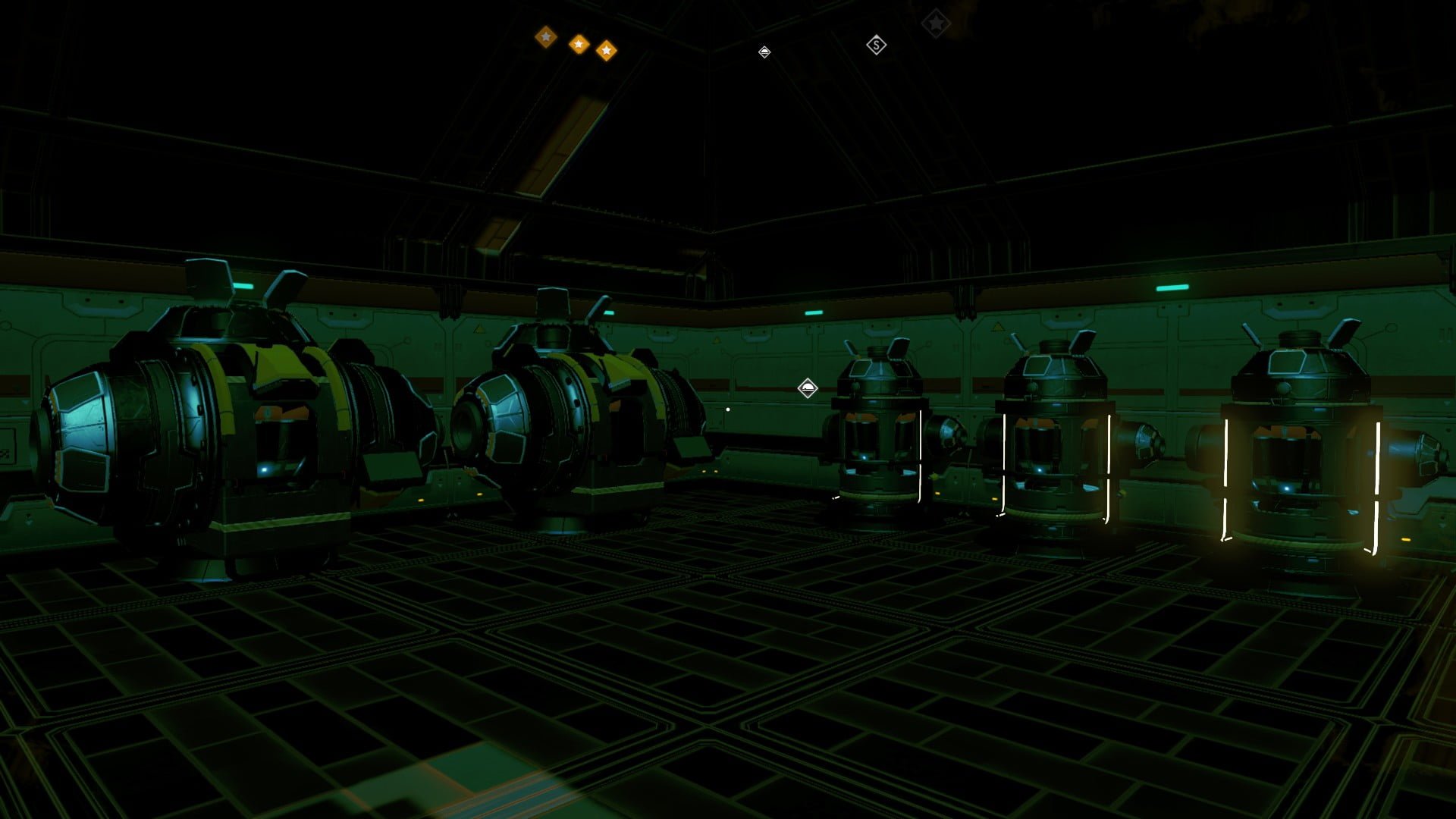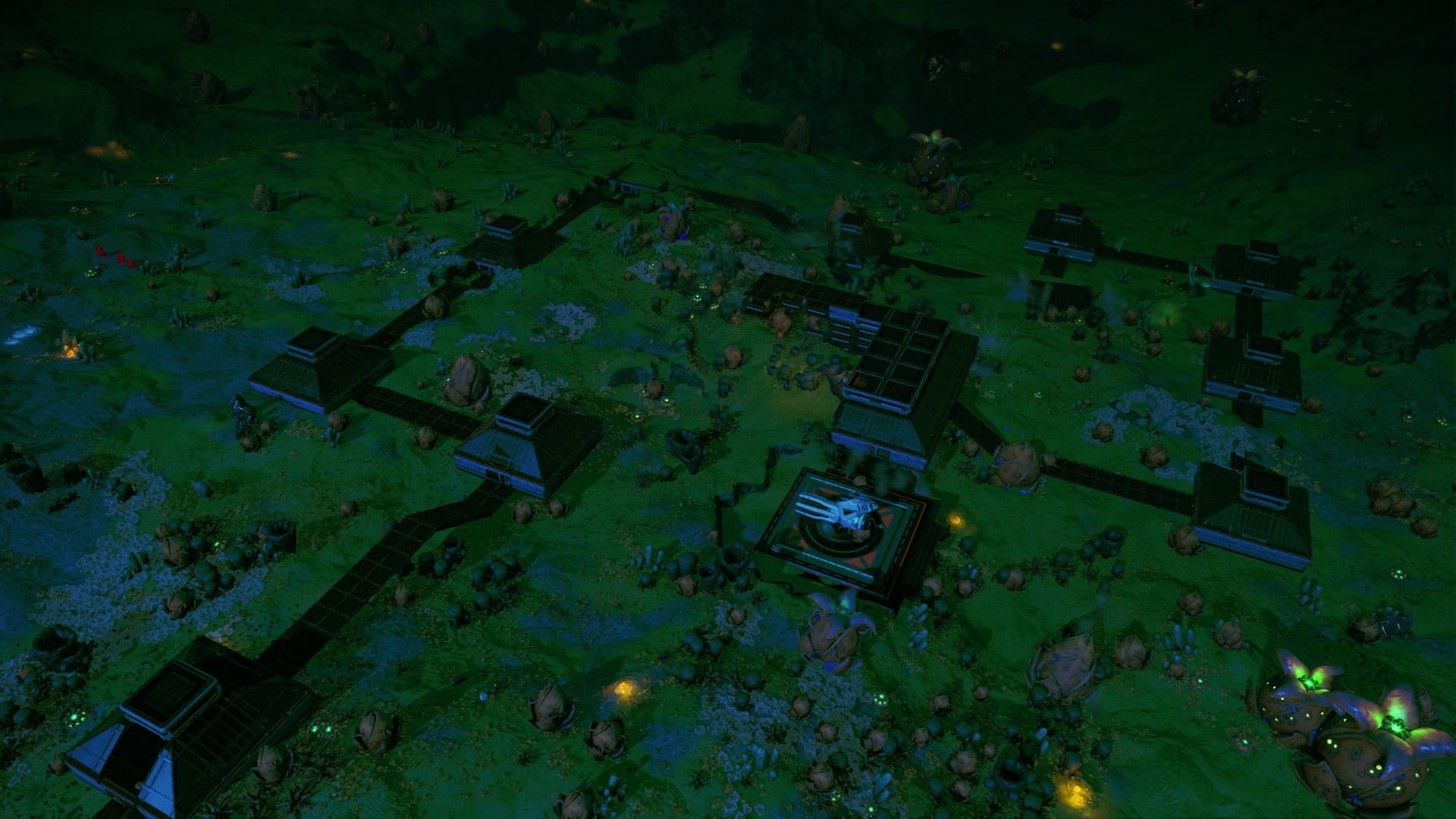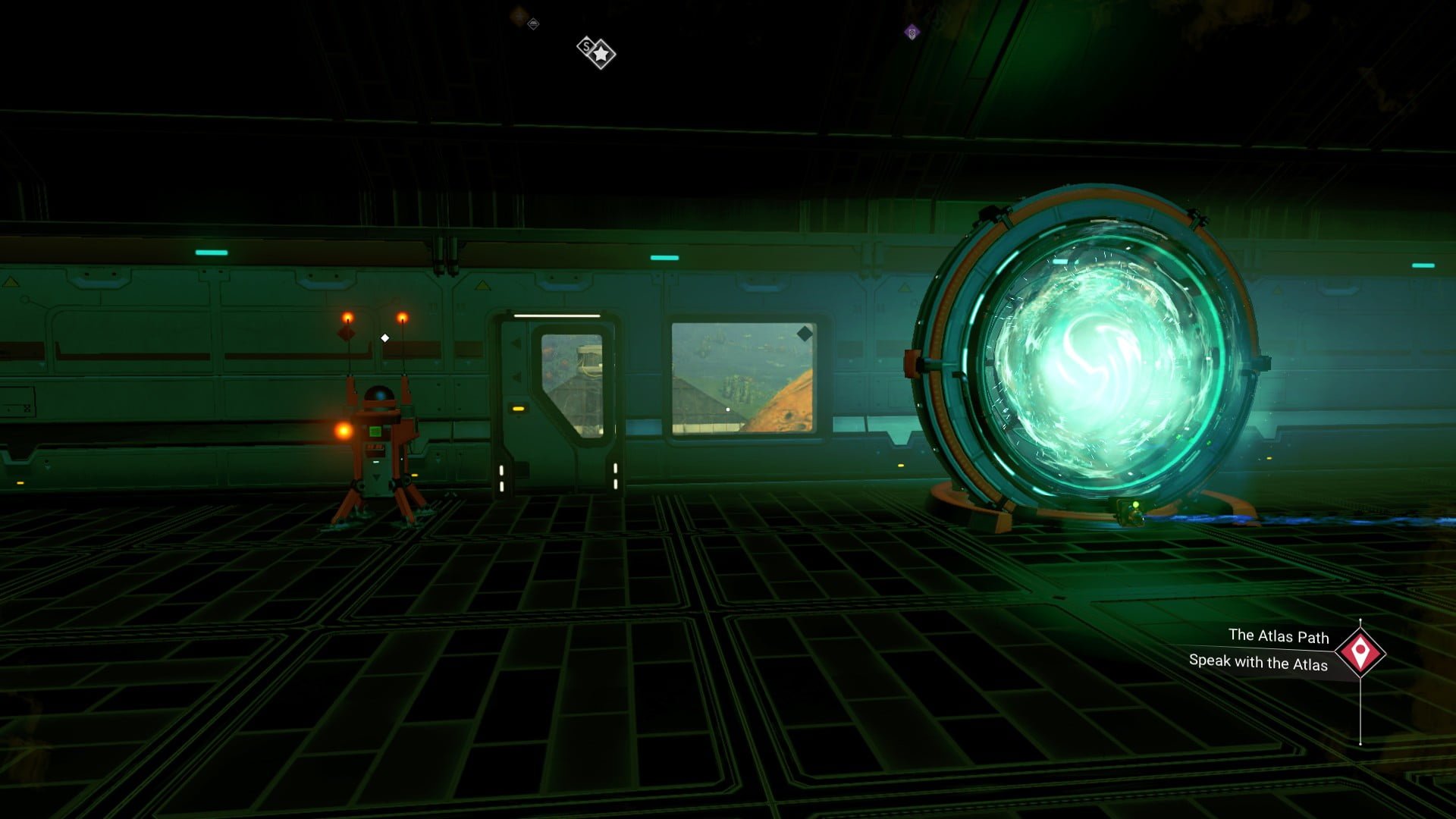Table of Contents Show
In this guide aimed at end-game players, my goal is to provide an interesting but lucrative twist on your run-of-the-mill runaway mould farms that could help you rake in more nanites in less time.
No Man’s Sky Extreme Runaway Mould Farming
Are you tired of having infinite units and being perpetually out of nanites?
Does unlocking all the companion slots or upgrading a single ship or multitool from C-class to S-class seem brutally expensive?
Are you too stubborn to turn down the nanite requirements in the custom difficulty options menu?
Do you just want to fill out your entire freighter and all its storage units with runaway mould and be the galaxy’s greatest proprietor of nanites at the Anomaly?
If you answered YES to one or more of these questions then this guide on runaway mould farming is for you! In this guide I’ll be proposing an interesting twist on the runaway mould farming business that could greatly increase the amount of nanites earned at the end of a long grinding session.
Preparation
As stated in the guide thumbnail, this guide is ultimately aimed at end-game players who need a quick and reliable way to get clusters of nanites without expending too much time or effort once the entire farm is set up. However, this could be reasonably started as early as mid-game once you’re less restricted on resources, recipes, and blueprints, provided you dedicate yourself to this as a future investment.
Here’s what you’ll absolutely need to make the most bare-bones setup:
- An irradiated planet that has curious deposits and occasional storms.
- Access to an entire array of basic base parts, such as the entire metal building part tree, for unrestricted basic base building.
- Access to large and medium refiners, as well as the resources to make them. Or alternatively, access to the freighter refiner room part.
- Access to base teleport modules and the means to power them.
These next things aren’t entirely necessary, but are strongly recommended:
- The patience to find an irradiated planet with extreme weather and curious deposits.
- A powerful S-class multitool, with your optical drill placed in a supercharged slot; Additional S-class mining beam modules preferred to help speed up mining.
- Strong hazard protection, specifically for radiation resistance, as well as either sodium or ion batteries to recharge it.
- Access to save beacons.
How to find curious deposits
Before runaway mould farming can even start, there must be a system that first has curious deposits, which are these large and spherical organic-looking balls:
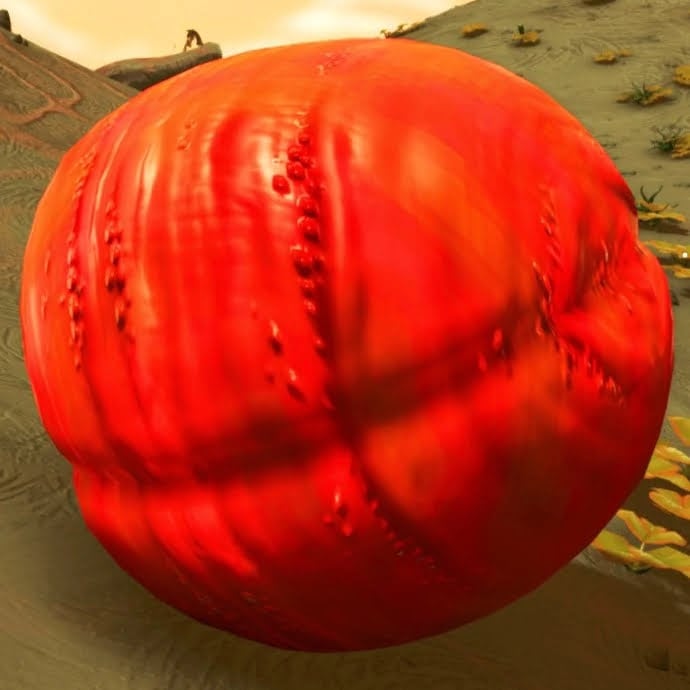
Not all of them will look like this however, and they vary widely in color palette. Some planets you find them on will blend in well with the ground, and some will stick out like a sore thumb like this one.
Curious deposits are a Unique System Resource that can be seeded in any given system you visit. Here is a full list of the pool for all potential resources that have a chance to generate. Every system will only have only ONE of these generate from each of these pools:
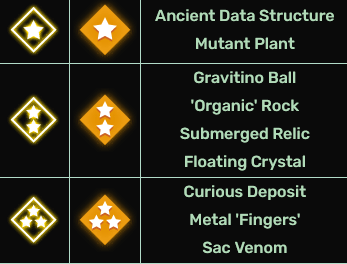
Essentially you have a 1 in 3 chance for the system you visit to have them. The easiest way that I know of to find out if your system has them or not is to go down onto any planet in the system, get in an exocraft that has a scanning module attached, and roam around scanning until you can find the item that is tied to the 3-star icon. If curious deposits are not in the system, simply go to the next system.
Finding the right planet
For this particular setup, we will be utilizing an irradiated planet. The easiest way to find an irradiated planet with curious deposits is to hop between systems looking for an irradiated planet and using the method listed prior to search for curious deposits. Preferably you’ll want to look in systems that have many planets and moons in them to maximize your chances. If you’re having trouble identifying irradiated planets, here’s a handy list of all the planetary prefixes that appear when scanning a planet from space that denote a radiation planet:

But not all planets are created equal. Some are tranquil and storm-less, and some are chaotic hell-spawn that seem to only ever have back-to-back storms. So how do you differentiate between them? A safe bet is to simply find an extreme radiation planet. They will always have storms, and they will always be relatively frequent. You can identify an extreme planet by scanning it from space and seeing if its stellar metal is “activated” or not, such as “activated copper”
However, even then extreme weather planets are not created equal and there can be differentiation in the frequency of storms based on the weather intensity of the planet. You can see how intense the weather is on a planet by landing and examining that little box in the lower right hand corner of your screen that lists off the weather strength, sentinels, flora, and fauna. Below is a list that ranks the names based on the overall intensity of the weather. The least intense ones are at the top, and the most intense ones are at the bottom:
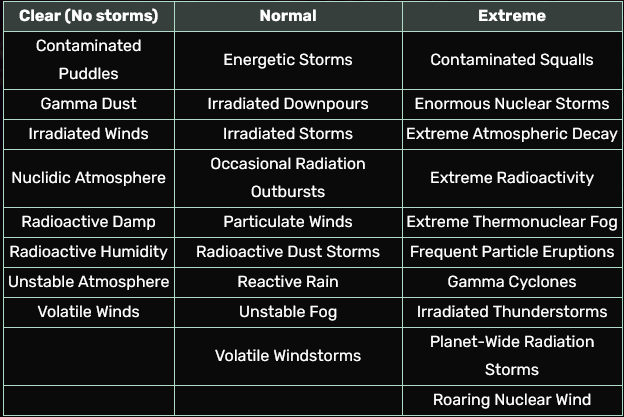
Why do you want a radiation planet with storms when you’re wanting to farm runaway mould? Well, I’ll tell you; Radioactive planets have a special attribute tied to their storms called Localised Ionic Collisions:

This should be pretty self explanatory as to why you’ll want an irradiated planet that is capable of having storms, and you can probably already see where this is going in relation to runaway mould farming.
For the sake of this runaway mould farm guide, we will of course want to avoid storm-less planets, as they will not give you the storms needed to take advantage of the Localised Ionic Collisions buff to your mining laser. But based on the list we can see that the irradiated planet with the most frequent storms will have Roaring Nuclear Wind as its weather status. If you’re eager to get the absolute most out of this farming setup and have the patience, find an extreme irradiated planet with Roaring Nuclear Wind that also has curious deposits.
Finding the right deposit clusters
Regardless of whether you settled for a regular planet and plan to only farm during storms, or if you’ve cranked the dial up to 11 and found an extreme planet and plan to constantly farm until you’ve hit a million nanites, the next step is to actually locate the curious deposits themselves.
But not just any deposit spot. Although you technically can just use any spot where you find them, it’s highly recommended you get not just one deposit, but TWO. And not only that, but also it is recommended for them to be around 20 curious deposits each, give or take a few. Also that they’re relatively far apart on a planetary scale, but they don’t need to be on opposite sides of the planet. About 5 to 10 minutes away is fine.
Why do you want more than one deposit? In case you weren’t aware, after moving a certain distance away from almost any plant, rock, or resource of any kind, they will respawn in the same location in the same configuration as they did before. We will use this mechanic to our advantage in order to maximize runaway mould farming potential. For this particular setup I’d recommend only two deposit spots though, as we will be utilizing base teleport modules to warp between them. Any more is superfluous.
Constructing your twin bases.
How you go about designing and structuring your bases is ultimately up to you. But in the end if you don’t plan on refining everything on your freighter, one of your planetside bases should serve as the primary area where you’ll do all your refining, and the other will serve as the base to teleport to in order to proc the curious deposit respawn and also continue farming mold. But below I will provide some explained examples for the setup I made. It isn’t anything fancy or spectacular, and in fact it just gets the job done:
Firstly, we’ll be using large and medium refiners because they do not require any power or fuel of any kind from your base or inventory, unlike personal or portable refiners. Next you’ll want to determine on average how much runaway mould you want to refine at any one time. I arbitrarily decided that I wanted to farm until I was able to refine 100,000 nanites at once. The refiners are capable of processing 9,999 runaway mould at a time over the course of 20 minutes into 1,999 nanites using this recipe here:
Doing some simple math, I determined that I would need 50 refiners, and for this particular setup I used 20 large refiners and 30 medium refiners and I arranged them into sets of 5 like so:
The tricky part comes in when you try to place more than 2 large refiners or 3 medium refiners into a certain radius of each other. You’ll get a message like this that prevents you from doing so:
![]()
There is an easy way to circumvent this though. “The local area” isn’t tied to your entire base, instead it’s quite literally just the local area. In the end, all you need to do is walk a short distance away from where the nearest refiners are and construct some more. The end result of that process for me was just creating a string of 10 buildings shielded from the outside weather that had a set of 5 refiners in them each, like so:
How your other base looks doesn’t matter too much either. You can have more refiners there if you’d like to farm the mold you farm from there as well, but ultimately it’s just there to let you continuously farm mold and to also ensure that the other mold location respawns. This way you can simply hop back and forth between the two and farm continuously. I do highly recommend linking the two bases with a base teleport module and having a save station nearby for both convenience and caution. No Man’s Sky is not known for being the most stable game.
Hazard pay
At this point, everything should be all set up! You have your curious deposits on the irradiated planet, you have your bases set up to refine everything…
But there is one little linchpin that you absolutely need to be aware of. In order to reap from the benefits of the Localised Ionic Collisions, you actually need to be out in the storm itself. If you’re indoors or otherwise sheltered from the effects of weather it WILL NOT WORK. This is why I recommended at the beginning of the guide to invest in radiation defense, or other strong hazard protection modules, and make sure you have plenty of resources to recharge them since you’ll be braving the storms to get your runaway mould.
But it is most definitely worth it. Just ensure that you have your Optical Drill slotted into a supercharged slot to get the absolute most that you can from harvesting the curious deposits. You’ll be granted an astounding bonus:
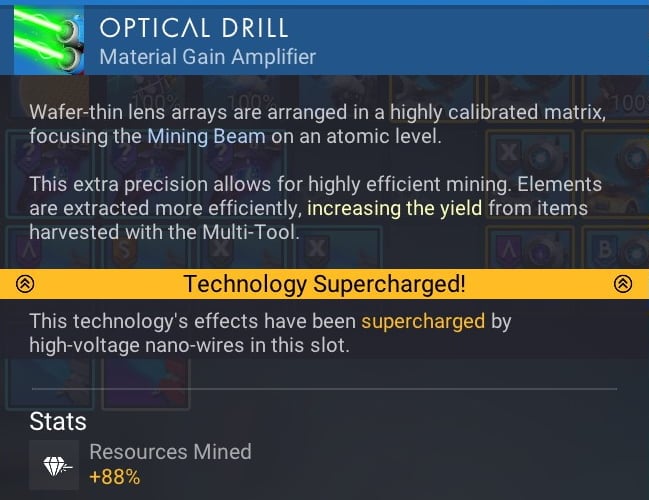
Although if you’re still skeptical about just how much of a difference the Localised Ionic Collisions buff from the radiation storms really makes, here is a quick comparison between the two. They both have the supercharged Optical Drill, but one is without the Localised Ionic Collisions buff and one of them is during a storm where I have the Localised Ionic Collisions buff active:


The difference is staggering, you get over 2 and a half times as much runaway mould per curious deposit when farming during a storm. And if you’ve bagged yourself an extreme planet, well you’ll be having these very profitable storms quite frequently and can make ungodly amounts of nanites.
Also, as a final tip. Try not to leave the system you’re in while refining the runaway mould. Many people have experienced their resources simply disappearing from their refiners if they stray too far by doing things such as going to a different system.
Conclusion
That should be everything needed to help you find and make your perfect irradiated mold farm! Happy farming.
